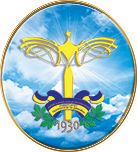Please use this identifier to cite or link to this item:
https://er.knutd.edu.ua/handle/123456789/31947| Title: | Floral symbolism in Ukrainian painting of the second half of the 20 th century |
| Other Titles: | Квітковий символізм в українському живописі |
| Authors: | Butovska, O. |
| Keywords: | українське мистецтво флорографія національна ідентичність натюрморт cultural memory Ukrainian art national identity florography still life artistic tradition semiotics |
| Issue Date: | 2025 |
| Citation: | Butovska O. Floral symbolism in Ukrainian painting of the second half of the 20 th century = Квітковий символізм в українському живописі [Текст] / O. Butovska // Art and Design. - 2025. - № 3 (31). - С. 68-78. |
| Source: | Art and Design |
| Abstract: | Актуальність дослідження зумовлена необхідністю комплексного вивчення квіткового символізму як важливого засобу збереження та трансляції національної ідентичності в українському живописі періоду ідеологічних обмежень (1940-1980-х рр.), що має особливе значення для розуміння механізмів культурного опору та формування національної свідомості. Метою дослідження був комплексний аналіз особливостей розвитку квіткового символізму в українському живописі у другій половині XX ст. та визначення його ролі у формуванні національної художньої ідентичності. Застосовано комплекс мистецтвознавчих методів: іконографічний аналіз символічних значень, стилістичний аналіз художніх особливостей та семіотичний підхід для розкриття системи символів. Проаналізовано творчість провідних українських художників (М. Глущенко, В. Костецький, Т. Голембієвська, І. Красний, О. Шовкуненко, Т. Яблонська, Є. Волобуєв) у період 1940-1980-х рр. Визначено еволюцію квіткового символізму від символів надії 1940-х рр. через пошуки національної ідентичності періоду «відлиги» до філософського осмислення буття. У процесі дослідження з’ясовано символічне навантаження ключових квіткових мотивів, наприклад, півонія асоціюється з відродженням, волошка – з любов’ю до рідної землі, мальва виражає ідею родинного добробуту, а поєднання нарциса й колосся втілює циклічність природи. Доведено використання квіткових образів як засобу непрямого вираження патріотичних почуттів в умовах ідеологічних обмежень. Встановлено, що створена художниками багатошарова семіотична система функціонувала на рівні індивідуального висловлювання та колективної пам’яті, яка забезпечувала трансляцію національних цінностей у змінюваних історичних умовах. Результати дослідження можуть використовуватися у викладанні історії українського мистецтва, мистецтвознавстві, культурології, кураторській діяльності та створенні музейних експозицій The relevance of the study is determined by the need for a comprehensive study of floral symbolism as an important means of preserving and the transmission of national identity in Ukrainian painting during the period of ideological restrictions (1940s-1980s), which is of particular importance for understanding the mechanisms of cultural resistance and the formation of national consciousness. The aim of the study was to conduct a comprehensive analysis of the development of floral symbolism in Ukrainian painting in the second half of the 20 th century and to determine its role in the formation of national artistic identity. A set of art history methods was applied: iconographic analysis of symbolic meanings, stylistic analysis of artistic features, and a semiotic approach to reveal the system of symbols. The work of leading Ukrainian artists (M. Glushchenko, V. Kostetsky, T. Golembiievska, I. Krasny, O. Shovkunenko, T. Yablonska, E. Volobuev) in the period from 1940 to 1980 was analysed. The evolution of floral symbolism is traced from the symbols of hope in the 1940s through the search for national identity during the “thaw” period to the philosophical understanding of being. The research has clarified the symbolic meaning of key floral motifs, for example, the peony is associated with rebirth, the cornflower with love for the native land, the mallow expresses the idea of family well-being, and the combination of the daffodil and the ear of corn embodies the cyclical nature of nature. The use of floral images as a means of indirectly expressing patriotic feelings in conditions of ideological restrictions has been proven. It has been established that the multi-layered semiotic system created by artists functioned at the level of individual expression and collective memory, which ensured the transmission of national values in changing historical conditions. The results of the study can be used in teaching Ukrainian art history, art history, cultural studies, curatorial activities, and the creation of museum exhibitions |
| DOI: | 10.30857/2617-0272.2025.3.6 |
| URI: | https://er.knutd.edu.ua/handle/123456789/31947 |
| ISSN: | 2617-0272 |
| Appears in Collections: | Наукові публікації (статті) Art and Design |
Files in This Item:
| File | Description | Size | Format | |
|---|---|---|---|---|
| artdes_2025_N3_P68-78.pdf | 551,12 kB | Adobe PDF | View/Open |
Items in DSpace are protected by copyright, with all rights reserved, unless otherwise indicated.
